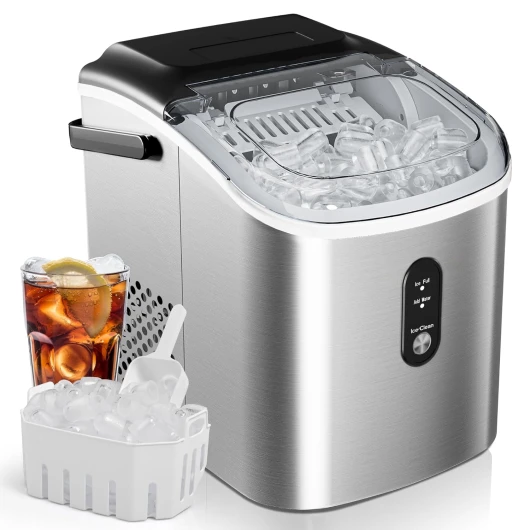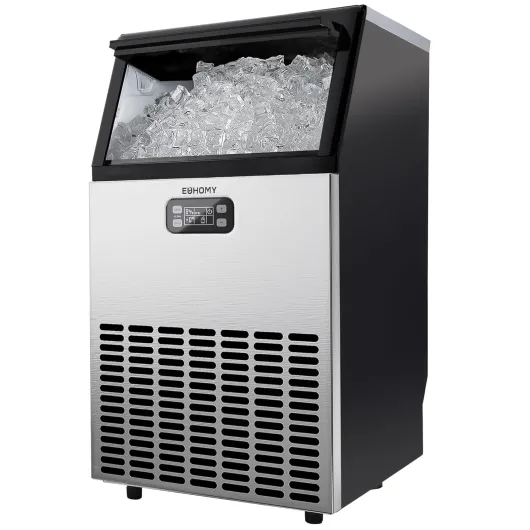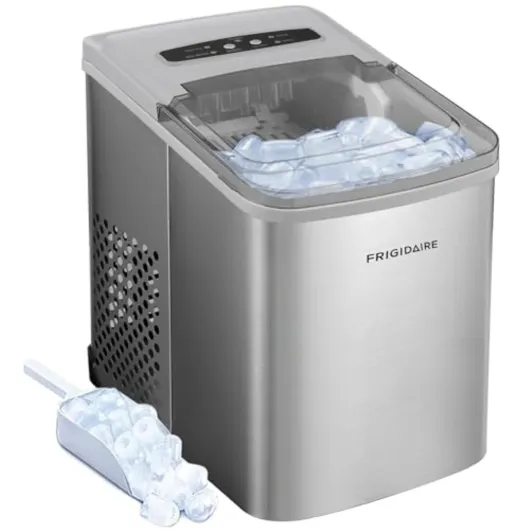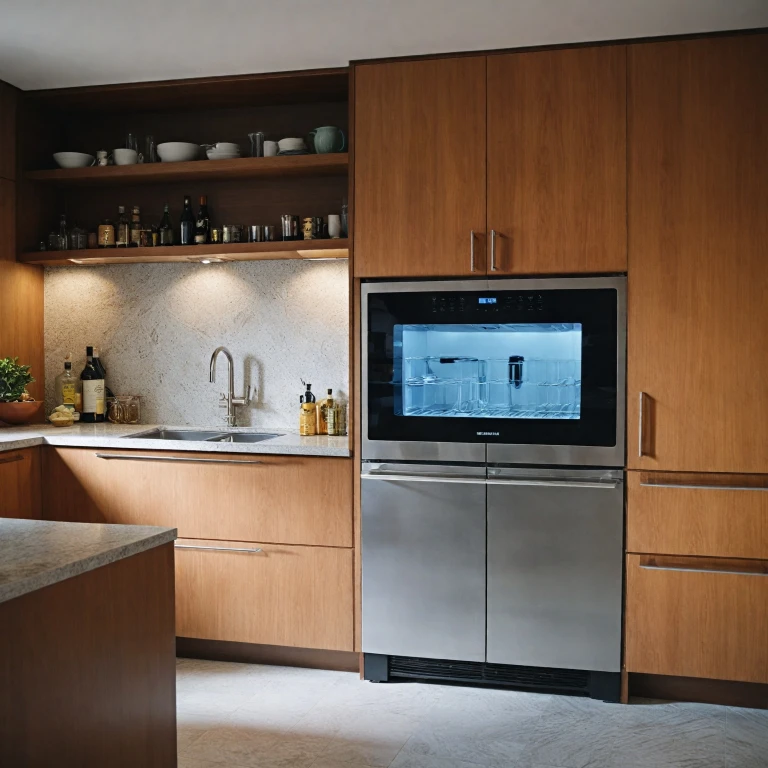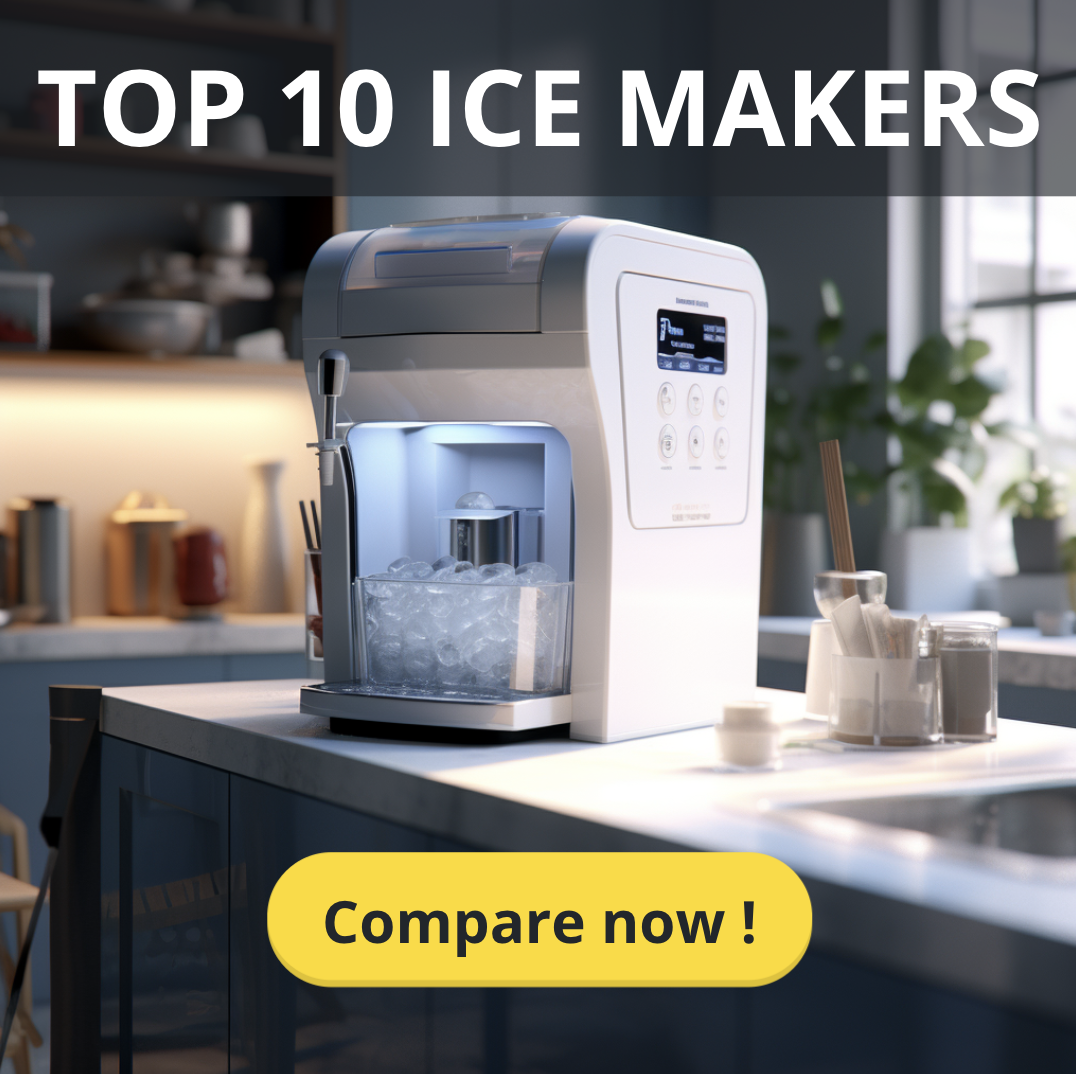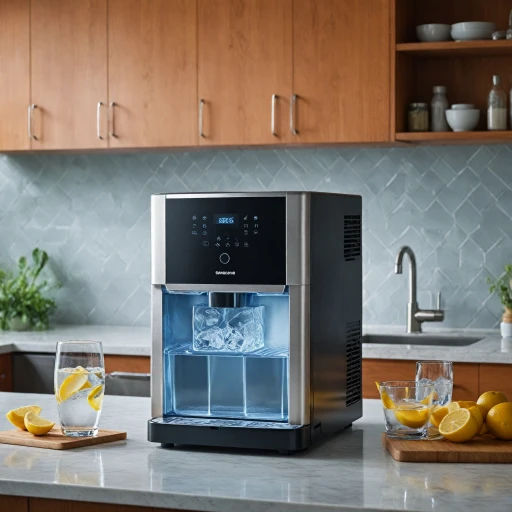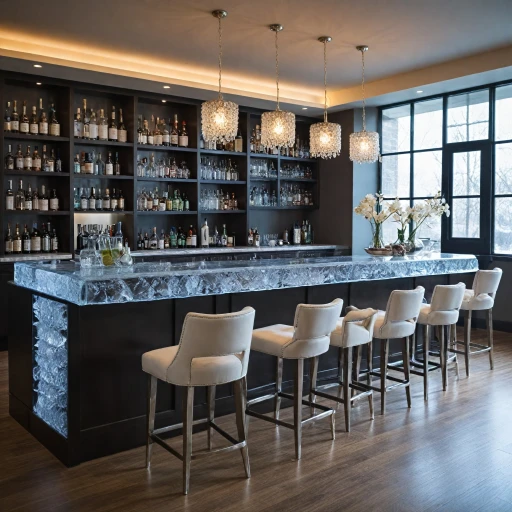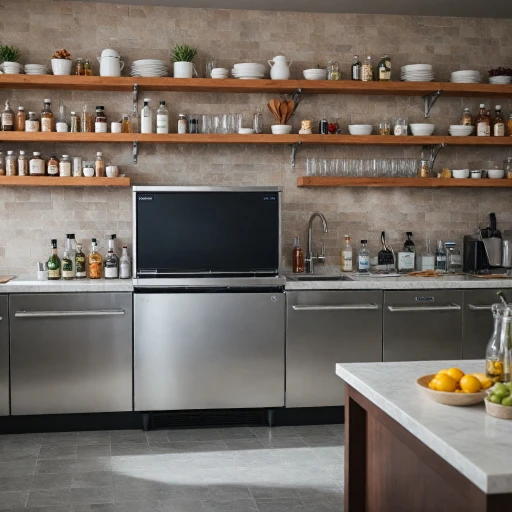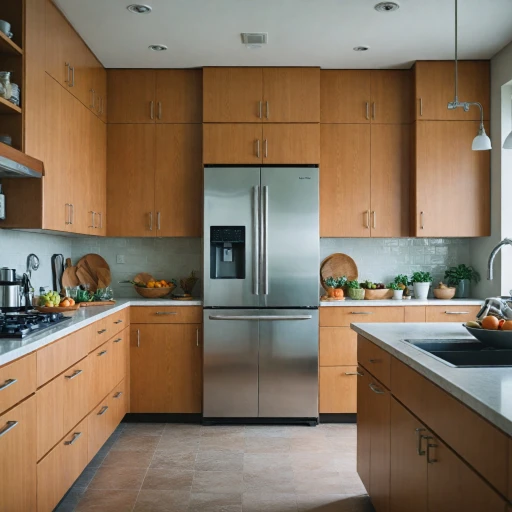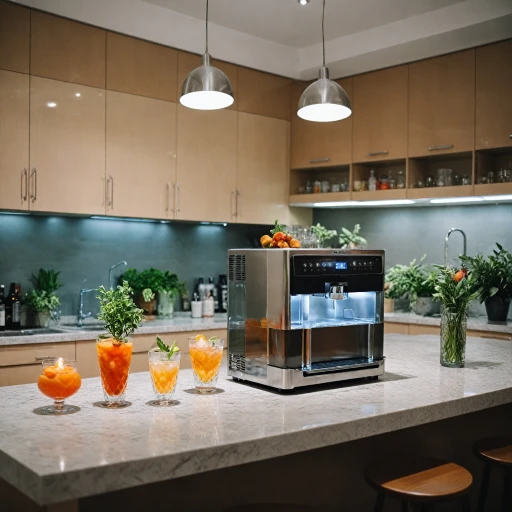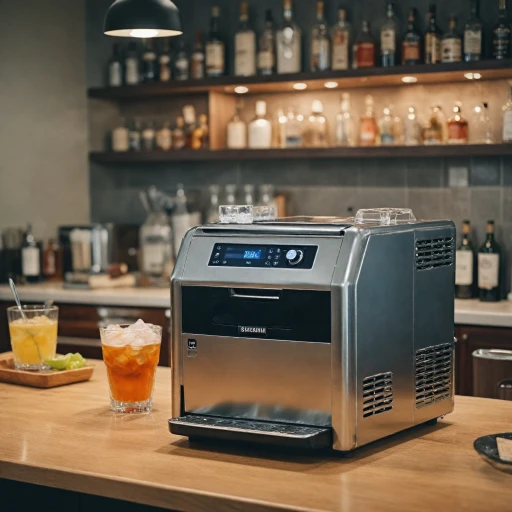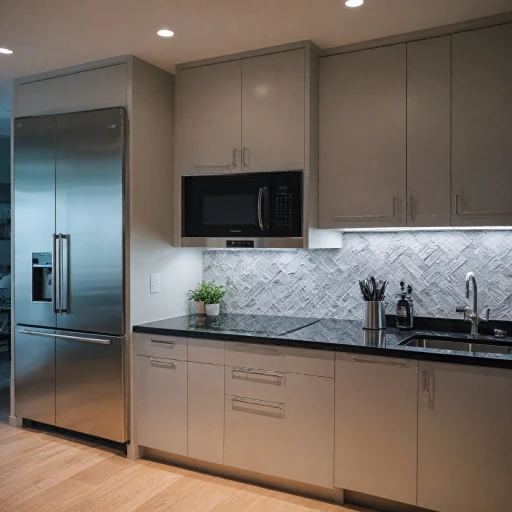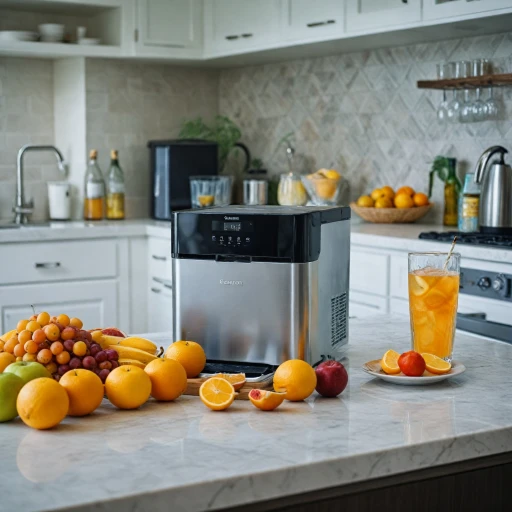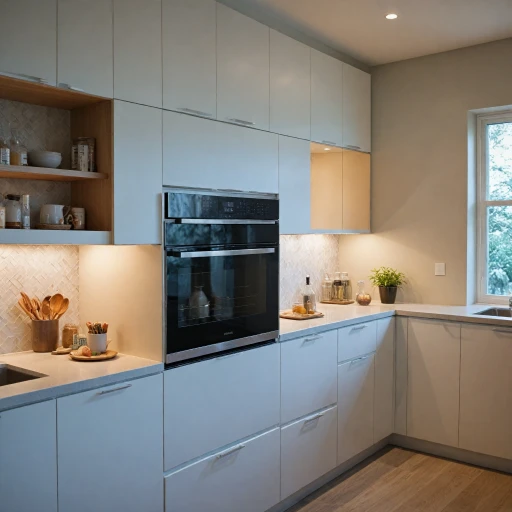
Understanding Your Ice Needs
Evaluating Your Ice Requirements
Choosing the right residential undercounter ice maker begins with understanding how much ice you truly need. Consider whether you're using it for large family gatherings, regular social events, or daily beverages. The capacity of your ice maker is crucial; options range widely, from models with a lbs capacity as low as 12 per day to those producing over 80 lbs daily. Be realistic about your usage to ensure you select the appropriate ice production model.
For those seeking a versatile solution, an undercounter ice maker with adjustable settings for different ice cube sizes may be beneficial. If you're interested in exploring different models, consider checking out options tailored to your specific needs.
Don’t forget about the shipping color panel and the steel built structure, as these can add aesthetic value to your kitchen while serving your ice needs. Also, think about the installation with regards to free standing or built-in. If ice is a staple in your everyday life, investing in a reliable stainless steel ice maker can make a world of difference.
Space and Installation Considerations
Choosing the Right Installation Spot for Your Ice Maker
When investing in a residential undercounter ice maker, it's crucial to consider the space and installation requirements to ensure smooth integration into your home. A careful assessment of these factors will not only enhance efficiency but also prolong the lifespan of your machine. First, identify the available space where you plan to place your ice maker. Most units are designed to fit into a standard 15-inch wide cabinet space, but you'll also find models as narrow as 14 inches or as wide as 20 inches. When measuring, remember to account for any surrounding cabinets or appliances. Adequate airflow is vital for the machine's operation, so ensure you leave enough space around the unit. Additionally, understanding the installation type can help in choosing a suitable model. Consider whether you prefer a built-in design or a free-standing model. Built-in ice makers typically offer a more seamless appearance by aligning with your cabinetry, while free-standing models provide more flexibility in placement options. Next, take note of the specific requirements for water and drain connections. These are essential for the continuous production of ice. Ensure there's a nearby water supply line and proper drainage to handle the machine's operations. Some models come with a built-in drain pump, making it easier to install in locations where gravity-based drainage isn't possible. Also, think about the finish that would best blend with your kitchen or bar decor. Stainless steel is a popular choice because of its durability and timeless appearance. It's resistant to rust and easy to maintain, making it a practical option for households. Lastly, don’t forget to check the product's shipping dimensions and consider the ease of delivery to your residence. Some units can be heavy, often exceeding 100 lbs, so planning for safe and secure delivery is key. Investing time to assess these installation factors can help avoid potential problems and lead to a satisfactory long-term experience. For further guidance on what suits your kitchen best, consider exploring [the best undercounter ice makers] (https://www.best-ice-maker.com/blog/enhance-your-business-with-a-hoshizaki-undercounter-ice-machine).Types of Ice and Their Uses
Exploring Ice Varieties and Their Practical Applications
When investing in an undercounter ice maker, it's crucial to consider the type of ice it produces. Different ice types serve various functions and can significantly impact your daily utilization and satisfaction. Common ice forms include cubes, nuggets, and flakes, each offering unique benefits and applications.
Cubed Ice: Perhaps the most traditional choice, cubed ice is ideal for everyday use, especially in beverages. Its solid build ensures slower melting, keeping drinks cold longer without diluting them rapidly. Models with stainless steel construction are particularly durable and often seen in residential inch settings, as they align well with modern kitchen aesthetics.
Nugget Ice: Known for its chewable texture and rapid cooling properties, nugget ice is a favorite for soft drinks and cocktails. A machine with a significant lbs daily production capacity ensures you never run out of these delightful ice chunks during gatherings, making your undercounter ice utilization more versatile.
Flaked Ice: Often used in culinary settings or to display seafood and meats, flaked ice molds easily to various shapes. Machines built free standing or undercounter that produce flaked ice are perfect for those hosting large events or running a minor catering venture, considering their unique requirements.
Your decision should align with your specific needs, whether it's about filling glasses with crystal-clear cubes or delighting your guests with soft, chewable nuggets. Evaluating your ice preferences and consulting with ice maker experts can guide you to a suitable production model tailored to your lifestyle.
Energy Efficiency and Water Usage
Balancing Efficiency and Sustainability
When selecting an ice maker for residential use, considering both energy efficiency and water usage is crucial. These factors not only impact your utility bills but also contribute to environmental sustainability. A residential undercounter ice machine can offer a compact solution without compromising on performance. To make an informed choice, focus on models that demonstrate a balance between output and resource consumption.
Many modern ice makers come with energy-efficient features. Look for appliances with Energy Star ratings, which indicate compliance with energy-saving standards. Ice makers with this certification can significantly reduce electricity consumption, potentially saving you money over the long term.
Water usage is another critical consideration. Inefficient ice makers can waste significant amounts of water, leading to increased utility costs. Opt for machines designed to maximize water reuse. Certain models employ advanced technologies to minimize water wastage during the ice production process, ensuring they remain efficient even with frequent use.
If you’re opting for a stainless steel or another durable material, check if the ice maker incorporates energy-saving mechanisms alongside its structural benefits. A well-built ice maker typically has an impressive daily production capacity of multiple lbs, without excessive energy or water use.
Maximizing your budget involves understanding the ongoing operating costs, not just the initial price. With the prolonged use of an energy-efficient and eco-friendly undercounter ice maker, these considerations become even more pertinent, helping you maintain the perfect balance between cost and performance.
Maintenance and Longevity
{\"
Ensuring Longevity and Ease of Maintenance
Proper maintenance is key to preserving the efficiency and durability of your undercounter ice maker. Whether it's a stainless steel model or a compact 15-inch wide unit, understanding the care requirements is crucial for long-term satisfaction.
First, pay attention to the \"ice production capacity\" of the machine. Regular cleaning of the machine's components will help sustain its \"daily lbs production\" and prevent any build-up that could hamper its performance. Rinsing and sanitizing the reservoir and filter can notably enhance your machine's lifespan. Most models come with detailed guidelines provided by manufacturers to aid in maintaining the optimal condition of the ice machine.
It’s important to consider models with \"built-in features\" that facilitate easier maintenance. Many ice makers now incorporate self-cleaning functions that can significantly reduce your workload. Moreover, when choosing a residential inch unit, investing in a machine with a \"free-standing drain panel\" can make operations and cleaning more convenient.
Checking the \"color and finish\" of your machine, such as a \"stainless steel panel\", is also worthwhile. Stainless steel is preferred not just for its sleek appearance but also for its resilience against rust and easier cleaning routines. Regardless of color or finish, regular exterior wiping can keep the unit spotless and free from corrosion.
Finally, determine the cost and availability of replacement parts. These include filters, panels, and crucial components, which can greatly influence your long-term investment in an undercounter ice machine. Selecting a brand with \"free shipping" for parts and strong customer support can eventually cut down on potential maintenance expenses.
Budget and Brand Considerations
Brand Reputation and Affordability Matters
Choosing the right undercounter ice maker for your home involves balancing cost with reliability and brand reputation. Considering the various aspects of ice production, from residential inch sizes to the lbs of daily capacity, it is vital to select a model that aligns with your budget and home’s needs. When evaluating your options, consider the following:- Budget: Determine a budget range that suits your financial comfort. Remember, the initial cost isn't the only expense; factor in potential maintenance and operation costs over the ice maker’s lifespan. Some models offer free shipping, which can ease upfront expenses.
- Brand and Model: Consider brands that are reputed for quality and durability. Look for production model reviews that highlight their longevity and customer satisfaction. Established brands often provide better customer support and longer warranties.
- Features and Specifications: Compare the features of models in your price range. From stainless steel builds to free standing options, each model offers unique features. For instance, a stainless steel ice machine with a color panel offers both durability and aesthetic appeal.
- Cost Efficiency: Beyond the initial cost, consider the energy efficiency and water usage of the machine. Efficient models lower long-term costs, aligning with sustainable household goals and enhancing cost-effectiveness.
- Installation and Space: Reflect on the space where the ice maker will reside. Models ranging from 15 to 18 inch wide provide different installation options, whether it's a built free standing model or a seamless built-in undercounter design.
-logo-retina.jpg)
